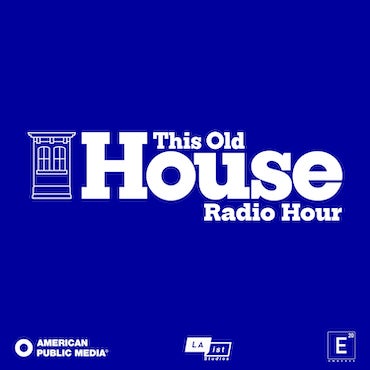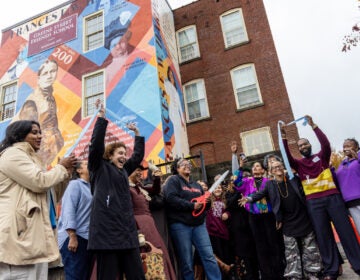In the age of the social media attack, Temple freshman lands on haters’ radar

Donald Trump supporters have harassed Nicole Farnham
It’s been a busy week for Nicole Farnham.
Since Monday, she’s been called a traitor, “skank” and “scum liberal moron” who should be charged with treason.
Strangers have posted her photo on social media and called for her to be publicly humiliated, fired from her job, and even attacked. Cyber bullies found out where she used to work and wrote bad reviews on her former employer’s social media pages. Others have been trying to find where she now works, their motive a mystery.
“The last week has been some of the darkest days of my life,” said Farnham, 19, a Temple University freshman who landed on haters’ radar after publicizing a protest, set for tonight in Pottstown, against Donald Trump.
But while this might be Farnham’s first taste of trolling, what makes her days darkest is normal for some. (Ask Zoe Quinn and other women caught up in gamergate.) And social media vitriol is at volcanic levels – from liberals and conservatives – after a bitter presidential race that Trump won in one of the most divided outcomes in modern history.
Social media helped Trump toward victory, experts say, with supporters cheered by his blunt tweets and their feeling of an unfiltered connection with a potential world leader. But the tenor of Trump’s more incendiary posts also has emboldened online obsessives who use social media as a tool to express their animosity anonymously, experts agree.
Because words can lead to action, what happens when America elects a president who some regard as an Internet troll himself? And what does the future hold when the line between free speech and hate speech blurs?
“It’s just words — until it’s not, right? Words tend to have consequences,” said Keegan Hankes, an analyst with the Southern Poverty Law Center, an Alabama-based civil-rights group that tracks hate groups.
Mary Chayko, a communications professor at Rutgers University and author of “Superconnected: The Internet, Digital Media, and Techno-Social Life,” agreed: “Trolling on social media has been on the increase in recent years, and it is hard to imagine that in this charged political climate matters will improve anytime soon. Online trolling is an assertion of power and privilege. It is an effort to put people — most often women — in their place. And it is indeed associated with physical harassment and violence. This is because the online and the offline are not really separate realities — they overlap thoroughly and constantly.”
Online hostility and harassment from both the left (see Keith Olberman and Dan Savage) and the right (see Michelle Malkin and Ann Coulter) is nothing new. After eight years with a black president, racist comments on social media seemed a near-daily occurrence. And the far left has not let go of its hatred for 2008 Republican vice presidential candidate Sarah Palin. “Plastic,” “whore,” and “bitch” are among the most common words used in tweets directed at Melania Trump. Even in death, former First Lady Nancy Reagan was on the receiving end of some hatred as well.
Still, Trump has ushered in a new era of extremism, experts agree. With the whole world watching, he’s a politician who has dumped decorum and used Twitter to berate and insult everyone from celebrities to his political opponents to the journalists who cover him. He’s a prolific tweeter — with 34,000 tweets, compared to President Obama’s 300-plus and less than 9,900 from Democrat Hillary Clinton — who has become known for wee-hour Twitter tirades.
Will that continue after he moves into the White House?
“It’s alarming, as a citizen of this country, knowing how it could easily distract him from the job he needs to do,” said Rob D’Ovidio, a Drexel University criminology professor and associate dean of Drexel’s College of Arts and Sciences. “He’s got a big enough job ahead of him, without spending time worrying about what people are saying to him on Twitter.”
Chayko agreed: “Some of the things he has said have served to solidify, and perhaps harden, opposition to him and his candidacy. This could easily become more and more problematic and divisive once he is in office. It is clear that Trump will want to continue communicating via social media to the extent that he can, but if his rhetoric does not become more temperate and inclusive, it is hard to imagine his supporters and his critics ever finding common ground.”
It’s tough to gauge how much the presidential campaign has spurred bad behavior online, because there are so many online platforms, and so many ways to communicate, in terms of public posts, closed chat rooms, direct messages and more, Hankes said.
“It’s really difficult to quantify these kinds of things — although the numbers don’t matter when you’re the victim,” Hankes said.
But in a report released last month, the Anti-Defamation League did try to quantify it, finding more than 2.6 million anti-Semitic tweets between August 2015 and July 2016. Much of the hostility targeted journalists and was driven by rhetoric in the presidential campaign, researchers determined.
Helen Ubiñas of the Philadelphia Daily News is used to hateful tweets, as one of the only Latina news columnists in a field dominated by white men. Still, she has seen more — and more violent — backlash online, including from one man who suggested she stick an automatic rifle in her mouth to others who have spewed slurs, wished rape on her or suggested she got her job through affirmative action.
“I know people are paying attention to this now and they should, but it’s not new,” Ubiñas said. “It absolutely has escalated, though, because people are so emboldened now. They say they don’t have to be PC now, because Trump basically gave them permission to be themselves. ‘We don’t have to apologize for being white, we don’t have to apologize for being men.’ And that’s on the tame side. On the other side is a totally different level of racism and sexism and telling me to go back to my country, which is the Bronx, but whatever. There is something bigger going on now, where more people think it’s OK to say all this. Before, we thought it was just people living in their mother’s basement saying these things, but now we know better.”
In fact, social media has given fringe groups a far bigger microphone, Hankes agreed.
“It’s just a few voices making a lot of noise, but these social media platforms get them more amplification than ever before and an audience they would never have access to before,” Hankes said. “Donald Trump and his supporters on the alt-right have shifted the window of what’s acceptable to talk about.”
Some would say such words already have given way to action. Within hours of Trump’s election win, spraypainted swastikas and slurs appeared around the country. And more than 400 incidents of hate-related harassment and intimidation were reported in the five days after the election, the Southern Poverty Law Center reported.
Just this week, a San Diego tech CEO lost his job after making death threats to Trump online. And Rutgers adjunct professor Kevin Allred was made to undergo a psychological exam on Wednesday after posting dozens of comments on Twitter about flag burning and gun control, including the statement “If I see any Trump bumper stickers on the road today, my brakes will go out and I’ll run you off the road.” Allred, who is on administrative leave, declined a request for an interview.
“Many people still do not see acts and events that happen in the digital world as fully consequential,” Chayko said. “Harassment and threats may seem less ‘real’ when they happen in digital environments, because as a society we still tend to devalue the reality of the digital relative to the physical … [But] even if online harassment does not turn physical, words — from name-calling to death threats — can frighten and wound.”
To that end, Twitter responded earlier this week, giving users more ways to mute and block trolls and report abuse, even if they’re not the targeted victims. The company also went on a banning binge, booting white nationalists like Richard Spencer off the platform.
Beyond that, a little restraint will go a long way, one expert added.
“Just because you have the right to say something doesn’t mean you should,” D’Ovidio said. “There’s a little more tact and couth that needs to be involved. Hopefully what we can learn from this process is that we can have differences of opinions, but we need to be respectful of others. That certainly starts with the President. He needs to recognize that rhetoric has the potential to have impact beyond the statements he makes. People need to realize: Your message doesn’t get heard when you need to scream it. Let’s bring the tempers down and have a real conversation and recognize that there are merits on both sides.”
As for Farnham, her tormentors have encouraged Trump supporters to counter-protest, vowing: “We will make them cry.”
“Make sure to conceal carry,” one wrote. “I’m sure those liberals will get violent and belligerent.”
Still, Farnham refuses to let the trolls silence her.
“What they’re doing is the most vile and stomach-churning thing. I don’t see any reason that someone should put this much hate out in the world when our country is already this divided,” she said. “But I won’t back down. I will stand up for what I believe in.”
WHYY is your source for fact-based, in-depth journalism and information. As a nonprofit organization, we rely on financial support from readers like you. Please give today.




